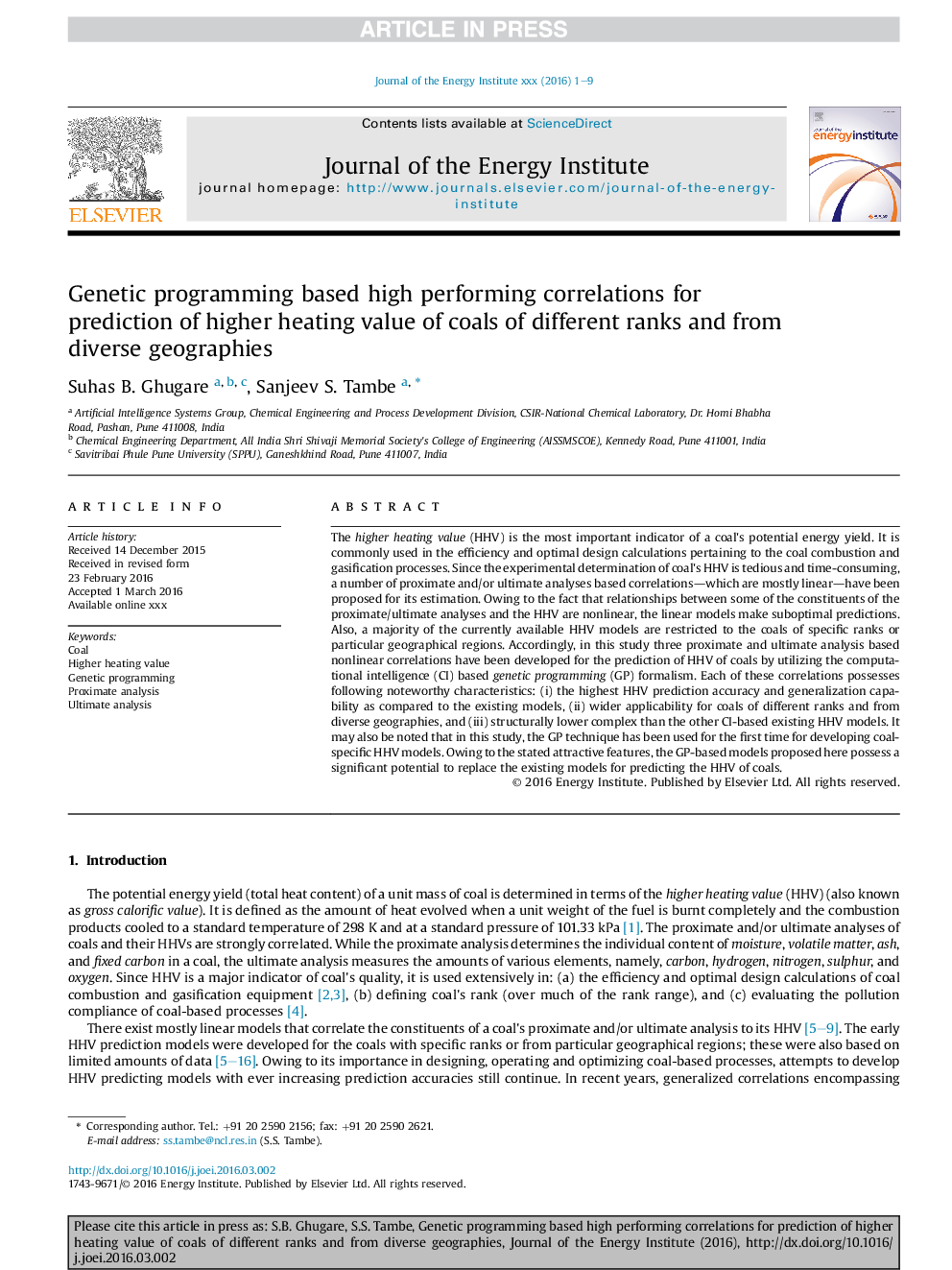ترجمه فارسی عنوان مقاله
برنامه نویسی ژنتیکی بر اساس همبستگی های بالا برای پیش بینی میزان گرمای بالاتر زغال سنگ از صفات مختلف و از جغرافیای مختلف
عنوان انگلیسی
Genetic programming based high performing correlations for prediction of higher heating value of coals of different ranks and from diverse geographies
| کد مقاله | سال انتشار | تعداد صفحات مقاله انگلیسی |
|---|---|---|
| 151458 | 2017 | 9 صفحه PDF |
منبع

Publisher : Elsevier - Science Direct (الزویر - ساینس دایرکت)
Journal : Journal of the Energy Institute, Volume 90, Issue 3, June 2017, Pages 476-484
ترجمه کلمات کلیدی
زغال سنگ، گرمای بالاتر، برنامه نویسی ژنتیک، تجزیه و تحلیل نزدیک، تجزیه و تحلیل نهایی،
کلمات کلیدی انگلیسی
Coal; Higher heating value; Genetic programming; Proximate analysis; Ultimate analysis;

